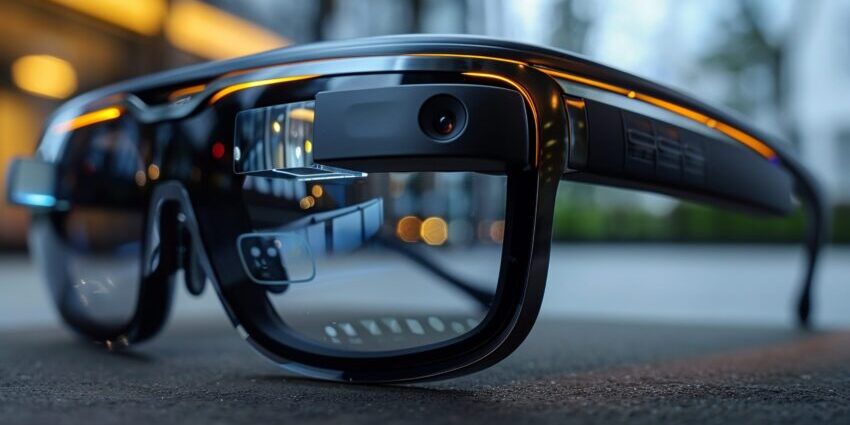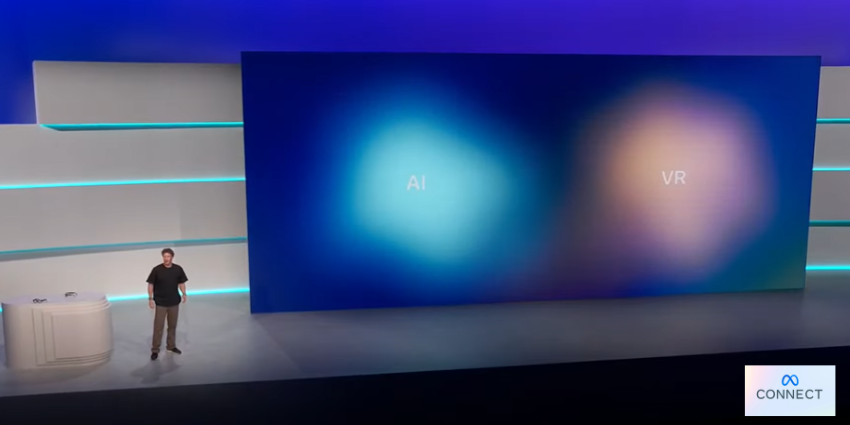That is a wrap on AWE 2024, another monumental XR event. Following the hotly anticipated Apple WWDC event the week before, AWE wowed audiences with a broader range of XR solutions providers, vendors, and representatives, driving the XR market for businesses.
Yearly, AWE is poised to showcase the best in XR, and this year was no expectation.
From consumer, arts, media, and enterprise, the event showcased the broad range of end devices and usages that are becoming increasingly commonplace – the enterprise sector led the majority of this showing.
Countless enterprise XR leaders showed up at the event, meaning that there were countless news and announcements at AWE. Luckily, XR Today compiled the major event updates.
SenseGlove Announces Nova 2 Worldwide Availability
Haptic gloves, the fascinating technology gaining popularity among XR enthusiasts, saw many developments at AWE this month.
SenseGlove announced the worldwide availability of its latest haptic feedback product, the SenseGlove Nova 2. After its showcase period at AWE 2024, the firm will debut the fresh product for roughly €5,999.
The SenseGlove CEO Frank Goovaerts explained that the Nova 2 product comes with “three types of haptic feedback” that enhance VR interactions.
Goovaerts also added:
Our clients shared their desire to feel things on their palms, just like with real objects. It took us many engineering hours, but with Nova 2.0, we made it happen while keeping the gloves wireless and easy to use.
The firm notes how the haptic product is ready for individual and shared, multi-user, enterprise sessions, allowing users to “feel” virtual training assets or interact with a co-worker during a virtual meeting scenario.
New features of the Nova 2 glove include palm-based contact feedback, magnetic-based force feedback, four haptic motors for rendering feedback, and finger-tracking integration.
HaptX Showcase G1 Product
The second piece of HaptX news emerging from AWE 2024 comes from HaptX. At the event, HaptX showcased its newly released G1 haptic gloves product.
AWE 2024 attendees were able to experience the product hands-on, showcasing the latest iteration of the firm’s technology to provide a competitive feedback solution for VR experiences.
The G1 device has a comprehensive software development kit (SDK) that allows users to incorporate realistic HaptX feedback into custom immersive applications developed with Unreal Engine and Unity.
The HaptX SDK includes tools for managing G1’s feedback and input while users are immersed in an application. Developers can use these tools to control feedback for simulating microscale surface textures, integrating with robotics, and enabling multiplayer functionality.
The HaptX-integrated multiplayer features allow remote teams to collaborate in a shared immersive environment, using gestures and receiving responsive feedback.
Furthermore, the device utilizes a lightweight Airpack that produces compressed air and regulates the flow to provide lifelike haptic feedback. Workers can wear the Airpack accessory on their back for a room-scale application or place the device on a table for a seated VR experience.
TouchDIVER Pro Haptic Glove Debuts
The third haptic feedback solutions provider is WEART. The firm revealed a new haptic glove solution at AWE 2024: the new TouchDIVER Pro haptic glove.
The new product introduces a redesigned system with six additional actuation points spanning all five fingers and the palm area. This enables TouchDIVER Pro users to enjoy enhanced haptic feedback with greater precision, immersion, and sophistication.
TouchDIVER Pro allows workers to use haptic gloves for various purposes, such as training, virtual prototyping, teleoperations, and immersive marketing experiences. To develop this product, WEART utilized the knowledge of its extensive partner network to ensure that its latest offering is suitable for the workplace.
The product enables workers to use haptic gloves for various purposes, such as training, virtual prototyping, teleoperations, and immersive marketing experiences. To achieve this, WEART leveraged the expertise of its broad partner ecosystem to ensure its latest product is ready for the workplace.
WEART plans to introduce its haptic glove solution as an easy-to-set-up, accessible XR product. The company offers the TouchDIVER Pro with three connectivity modes, including WiFi, Bluetooth Low Energy (BLE), and tethered hardware, to accommodate different setups.
WEART also aims to support a range of mobile headsets and PCVR end devices to maintain hardware accessibility and interoperability. WEART further enhances the device’s flexibility by utilizing an easy-to-wear form factor, eliminating the need for adapters, and providing a hot-swappable battery.
Sightful Highlights “World”s First” AR Laptop
Another exciting innovation seen at AWE 2024 was Sightful’s Spacetop product.
First announced during last year’s AWE event, the device is touted by its developers as the world’s first AR laptop. While the product is still under development, the firm is keen to demonstrate its abilities, which comes just in time as Apple brings eyes to spatial computing and MR productivity working tools.
The laptop provides a virtual 100-inch monitor with “perfect” mobility, allowing workers to use the product at home, in the office, or even on the go.
Sightful is showcasing the product in partnership with XREAL, a smart glasses vendor with experience in the consumer market but an increasing interest in providing an affordable Vision Pro workplace solution.
The Sightful laptop leverages the XREAL Air 2 Pro glasses, including 2X OLED display panels, 1920×1080 pixels per eye, and a 90Hz refresh rate.
Sightful notes that the firm is leveraging XREAL’s hardware to tailor its product for workers, focusing on considerations such as text legibility.
Interested customers can request the device via an early adopters programme that Sightful introduced at the start of the year.
XREAL Debuts Beam Pro
Speaking of XREAL, the firm introduced Beam Pro, an Android-based mobile device that allows users to access Google Play Store services as spatial AR applications through smart glasses—unveiled at AWE 2024. With the Beam Pro, XREAL smart glasses users can access AR applications in 360 spatial computing environments, utilizing 3 or 6 degrees of freedom.
The first model of the Beam product achieved a 70% attach rate with the firm’s AR headsets, such as XREAL Air, XREAL Air 2, and XREAL Air 2 Pro devices.
Based on this success, XREAL plans to expand the install base with the enhanced features of the Beam Pro. XREAL users can use the Beam Pro device to access Play Store streaming services, cloud gaming, and social media content.
The Beam Pro comes in various forms to accommodate multiple users. With prices starting at $199.00, the Beam Pro is available as either a Wi-Fi or 5G dedicated product, each with unique specifications based on the chosen model. These specs include a 6.5-inch LCD 2K (2400 x 1080) touchscreen display, Android 14 OS, XREAL Nebula OS, 27W fast charging, Bluetooth 5.2 support, 6GB/128GB storage for WiFi models, 8GB/256GB storage for 5G models, and gesture control support.
Sony Electronics debuts Spatial Reality Displays
Sony Electronics introduced new 3D visualization tools that allow users to view and interact with XR content without needing smart glasses, made possible through the ELF-SR2 (27-inch) and ELF-SR1 (15.6-inch) Spatial Reality Displays, which cater to professional RT3D workflows.
Thanks to this new display technology, users can engage with XR content without the need for invasive VR headsets, thereby promoting longer periods of use due to reduced hardware barriers.
Sony’s enhanced display solution facilitates collaboration over RT3D workflows, encompassing content creation, design, and visualization capabilities.
In addition, Sony has integrated its new spatial displays with the echo3D service, enhancing the user experience with a 3D digital asset management platform equipped with dedicated social applications.
The echo3D integration offers professional users a secure means to manage, store, control, optimize, and share 3D content. For instance, the echo3D integration streamlines the process of importing 3D assets, preparing them for various workflows such as storage, delivery, and analysis.
FundamentalVR to Integration AI Features
At AWE 2024, healthcare immersive training solutions provider FundamentalVR introduced AI integration to drive learning insights, surgical proficiency, and skills acquisition.
The AI integration provides real-time data assessments to enhance the firm’s leading training service via features such as tracking and analyzing user gestures through telemetry data.
FundamentalVR also notes that the integration provides medical device companies and educators with empowering analytics to inform decisions around product design, training efficacy, upskilling, surgical techniques, and patient outcomes.
Richard Vincent, Co-Founder and CEO at FundamentalVR, added:
We are excited to be back at AWE and showcase our platform’s new AI capabilities. Our AI-driven approach marks a transformative shift in surgical training,” said . “By providing real-time insights and personalized guidance, Fundamental Surgery is revolutionizing how surgeons acquire and refine their skills, ultimately leading to safer and more effective patient care.
The platform’s AI capabilities go beyond performance prediction, and the update provides expert guidance throughout the VR experience. Using advanced machine learning models, FundamentalVR can calculate users’ risk levels of harming patients in real-time, allowing immediate intervention and correction within a training experience.
HouseCall VR Debut News Immersive Learning Service
More healthcare news from AWE 2024.The immersive patient care and education platform HouseCalll VR partnered with the University of Georgia College of Pharmacy (UGACoP) to develop several VR diabetes education modules.
Linda Ciavarelli, the President and Co-Founder of HouseCall VR, said:
HouseCall VR envisions a future in which immersive technologies empower patients to better understand their health. By leveraging VR, HouseCall aims to democratize healthcare education, making it accessible across multiple platforms and reaching patients wherever they may be.
The VR learning modules will teach users about diabetes treatments, helping them understand medication outcomes, side effects, and medication administration.
Via the UGACoP partnership, HouseCall VR can leverage the partner’s pharmacy education and research, giving the VR modules the utmost level of detail and leadership.
Hololight Highlight XR Application Management Hub
Hololight is showcasing its app management platform, ‘Hololight Hub,’ at AWE 2024. The platform can host, stream, and scale augmented and virtual reality applications.
Businesses can utilize this web-based platform to manage XR applications like Frontline, Arthur, Matsuko, Taqtile, and Uptale. Users not only have seamless access to streaming the XR apps but also benefit from the performance and security features within the Hololight Hub.
Florian Haspinger, CEO and Co-Founder of Hololight, added:
By bringing together leading XR applications from independent software vendors (ISVs) and enterprise-developed XR applications on one platform, we are building an ecosystem of XR applications that address enterprise-level use cases such as design and engineering, training, remote assistance, and front-line worker support.
Microsoft Mesh to Gain Mac Support, AI Integrations, and Content Sharing Features
In a recent announcement, Microsoft introduced new avatar integrations and usability enhancements for its Microsoft Mesh platform. These updates are intended to improve the creation of avatar content for enterprise use on the Teams remote communication platform.
These new features are part of Microsoft’s efforts to develop an immersive avatar system, first made available for public preview in October 2022. Microsoft officially launched the Mesh service in January, highlighting its ability to enhance worker engagement for remote or hybrid work settings teams.
During the event, Microsoft unveiled a range of features for Mesh, aiming to improve the service’s usability across different enterprise environments. Many of these features will be released as a public preview before a full Mesh launch in early July.
In addition, Microsoft announced that the enhanced Mesh platform will be available for Mac users by late June. Mesh-ready teams can collaborate using devices like PCs, Macs, and Meta Quest headsets.
Niantic Launches 3D and XR Experience Builder
Niantic has unveiled its new ‘Niantic Studio‘ 3D and XR experience builder for 8th Wall developers at AWE 2024. This marks a significant advancement from traditional web-based XR and 3D builders, which mainly display code with minimal visual feedback for users.
The new builder, announced at this year’s AWE conference and exhibition, offers developers a real-time visual interface. 8th Wall has highlighted some key features of Niantic Studio, including easy-to-add interactivity, a new web gaming engine, editable simulations, advanced XR capabilities, cross-platform development, and team collaboration tools.
With built-in tools for graphic elements such as physics, cameras, lighting, animation, particles, audio, and game triggers, developers can easily create high-quality, engaging, immersive experiences.
Magic Leap’s New Google-Android WowMouse Application
Magic Leap and gesture technology innovators Doublepoint Technologies have announced a partnership to distribute WowMouse, an input device that utilizes Android smartwatches to enable gestures like pinch and gaze for AR applications.
The partnership aims to provide an alternative XR input method, allowing Magic Leap 2 users to interact with their existing smartwatches via Bluetooth. This eliminates the need for additional headset hardware integrations and peripherals when using an XR application without a controller.
The WowMouse service is designed to assist workers and businesses in leveraging AR applications due to its flexibility and accessibility. This addresses the challenge of controllers being a potential hurdle in corporate onboarding and understanding XR.
Since its launch earlier this year, the product has garnered approximately 55,000 downloads, demonstrating a demand for accessible alternative inputs. Magic Leap and Doublepoint facilitated this collaboration through the vendor’s developer ecosystem, which aims to accelerate the development of XR services.








